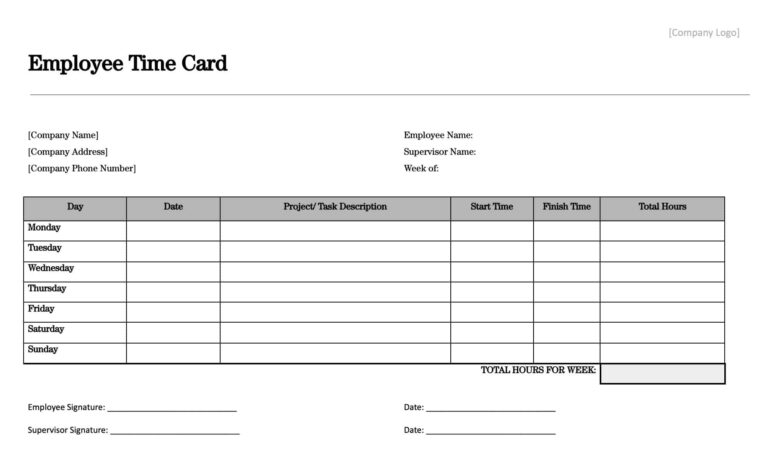The Comprehensive Guide to Time Cards: Tracking Work Hours Efficiently and Accurately
The Comprehensive Guide to Time Cards: Tracking Work Hours Efficiently and Accurately

What Are Time Cards?
Time cards are tools used to track the amount of time an employee spends on the job. These records can be in physical paper form or digital. Format and are essential for payroll, attendance tracking, and productivity analysis.
Importance of Time Cards
Time play a crucial role in managing workforce efficiency. Ensuring accurate payroll, and maintaining compliance with labor laws. They help businesses optimize labor costs and improve operational efficiency.
Historical Context of Time
The concept of time cards dates back to the Industrial Revolution when factories. Owners needed a method to watch and manage workers’ hours. Over time, the technology evolved from manual punch cards to sophisticated digital systems.
Types and Categories of Time
Manual time involve employees punching in and out. A mechanical time clock. These are simple but prone to errors and time theft.
Digital Time Cards
Digital time are managed through software that records clock-ins and outs. They offer greater accuracy and real-time data accessibility.
Biometric Time
Biometric time cards use fingerprint or facial recognition. to verify employee identity, reducing the risk of fraud.
Mobile Time
Mobile time allow employees. To clock in and out via smartphones or tablets. Providing flexibility for remote and field workers.
RFID Time
RFID (Radio Frequency Identification. Time cards use a chip embedded in a card to track attendance. Employees swipe or tap the card at a reader to record their time.
Symptoms and Signs of Ineffective Time Card Systems
Frequent discrepancies between reported. Actual work hours state an ineffective time card system.
Payroll Discrepancies
Issues such as underpayment or overpayment. Of wages often arise from inaccurate time records.
Low Employee Morale
Inefficient time tracking can lead to frustration and decreased morale among employees. Especially if they feel their hours are not being recorded.
High Administrative Burden
Excessive time spent on correcting cards. Errors and managing payroll signals an outdated system.
Causes and Risk Factors
Manual entry of time data is prone to mistakes. Leading to inaccuracies in payroll and attendance records.
Time Theft
Employees manipulate time to record more hours. Than actually worked is a common issue in manual systems.
System Failures
Technical glitches in digital systems can lead to lost or incorrect data.
Lack of Training
Inadequate training on time card systems can result in misuse and errors.
Diagnosis and Tests
Regular audits of time card records can identify discrepancies and areas for improvement.
Time Tracking Software Analysis
Evaluating the effectiveness of current software user-friendliness, accuracy, and reliability.
Employee Feedback
Gathering input from employees about. The time card system can highlight issues and potential improvements.
Treatment Options
Switching to automated time-tracking systems reduces errors and administrative workload.
Training Programs
Providing comprehensive training to employees on how to use time card systems .
Biometric Verification
Adopting biometric time cards to enhance accuracy and reduce time theft.
Regular Maintenance and Updates
Ensuring time tracking software and hardware. Are updated and maintained to prevent technical issues.
Preventive Measures
Establishing clear policies on time tracking and payroll can prevent misuse and misunderstandings.
Routine Monitoring
Regular monitoring and audits of time records help identify and address issues .
Employee Education
Continuous education and training on the importance of accurate time tracking.
Personal Stories or Case Studies
XYZ Corporation implemented a biometric time card system. Reducing payroll errors by 30% and improving employee satisfaction.
Case Study: ABC Inc.
ABC Inc. transitioned from manual to digital cards. Resulting in a 20% increase in administrative efficiency.
Expert Insights
“Accurate time tracking is essential for operational efficiency. Modern systems not only save time but also enhance data accuracy and employee trust.”
Jane Doe, Payroll Manager
“Switching to a digital time card system transformed our payroll process. Making it faster and more accurate.”
Conclusion
Time cards are vital for tracking work hours. Ensuring accurate payroll, and maintaining labor law compliance. Modern systems offer many benefits over manual methods, including improved accuracy and efficiency.



